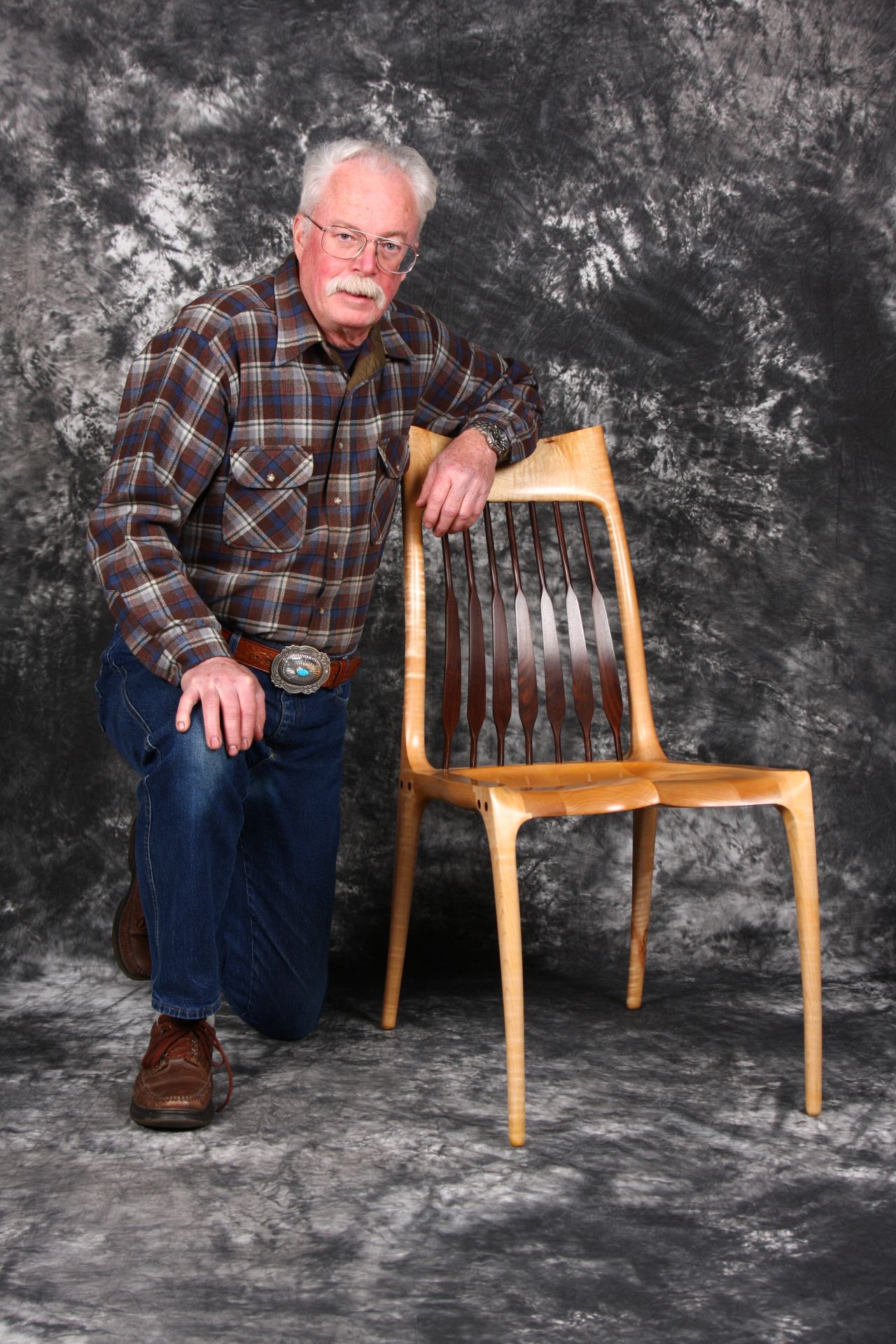 Furniture became one of Rick’s favorite interests as he completed college at California State University, Fullerton, where he earned Bachelor’s and Master’s degrees in Art.
Furniture became one of Rick’s favorite interests as he completed college at California State University, Fullerton, where he earned Bachelor’s and Master’s degrees in Art.
He started building pieces for himself to compensate for the tendency of American furniture shops to stock only the wares of mass-produced, commercial furniture manufacturers in wood furniture. Looking to furnish his own living room with a more artistic, more functional aesthetic in furniture, he took to the shop himself.
Eventually, in 1980, he decided it was time to make his mark as a professional furniture maker.
Rick makes wood furniture of many kinds: cabinets, entertainment centers, chairs, dining sets, to name just a few. He’s also crafted specialty items such as cannon carriages, cigar humidors and bookshelves. Of these, Rick holds a special love of chairs in his heart.
“I like chairs because they’re challenging. It’s easy to make a table, but a chair is an engineering problem. It has to support weight and be comfortable.”
Of the many kinds of chairs he makes-which range from dining chairs, low-back chairs and benches, to sofas and rocking chairs, Rick enjoys wood rockers the most. He likes how they invoke nostalgia of a simpler time, and the way they take center stage in a room, enticing guests to experience their soothing motion. His work on chairs covers a range of approaches, including pieces inspired by Sam Maloof, as well as many pieces of his own design and meticulous craftsmanship.
Rick attributes much of his success as a woodworker to growing up in Alaska, where he learned intricate carving techniques from Northwest Coast Indians. The skills he learned making masks, totem poles and canoes imbued in his approach to furniture craftsmanship an understanding of the importance of every object, both in how it looks and in how it is made.
The Indians, Rick explains, have many utilitarian things in their culture that are elaborately decorated. From spoons and other utensils to tools–even wooden fish hooks–all are works of art. So, like the Indians, Rick puts a little zest into his creations, using wood that “has character,” varying the colors and the grains he uses on his pieces and tailoring them to the size of the person for whom they are intended. As a result, his furniture delivers a profoundly personal connection to his clients, which may be why so many return for more pieces as they grow their collection of Pohlers originals.
But don’t be fooled: though Rick’s furniture is beautiful to look at, its functionality always comes first:
“I’m strictly into functional, not just building a piece of sculpture,” he says. “When you’re building a chair, for example, you have to remember that folks’ backs aren’t built straight up and down. I build things to be used.”
It may be a simple philosophy, but it is one–as his furniture designs clearly reveal–with an artistry all its own.
